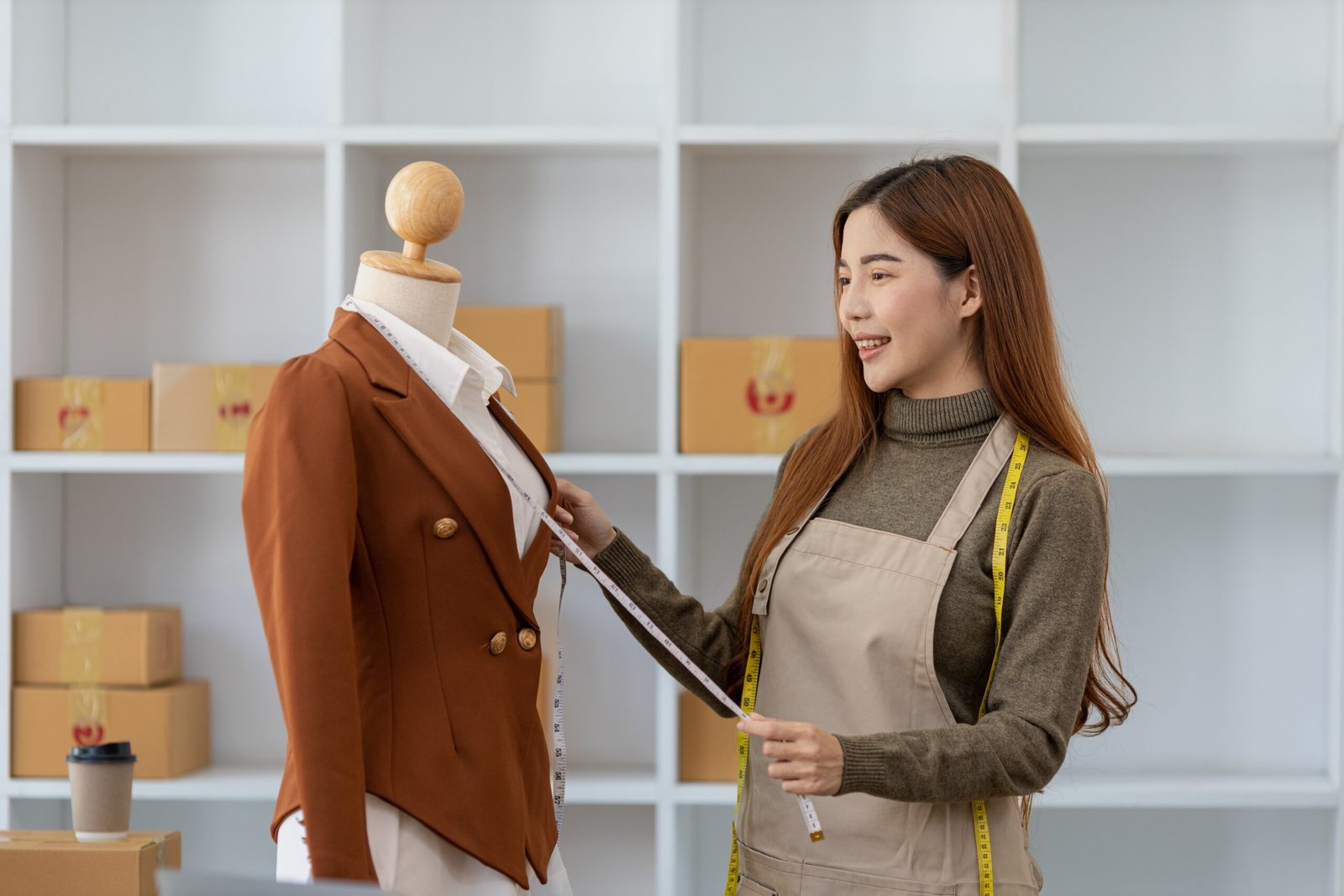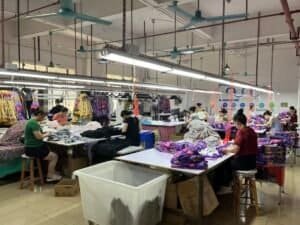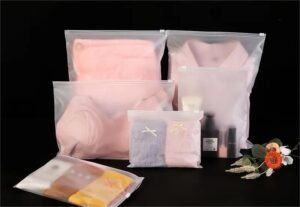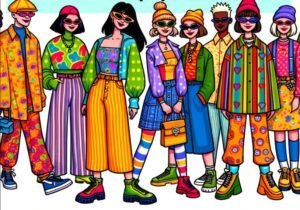As we all know, clothing samples are of great importance in the fashion industry. But why are they so important? I believe the reason is that clothing samples represent the material objects of your designs, which represent the standard of clothing production. The roles samples play in the fashion industry vary. They can be used in testing designs, fabrics, and fits. Moreover, they can help designers make adjustments to their work. So, making a clothing sample is something you must do in fashion industry. But before that, you should know something about making a sample. Here are ten essential things to know before making a clothing sample.
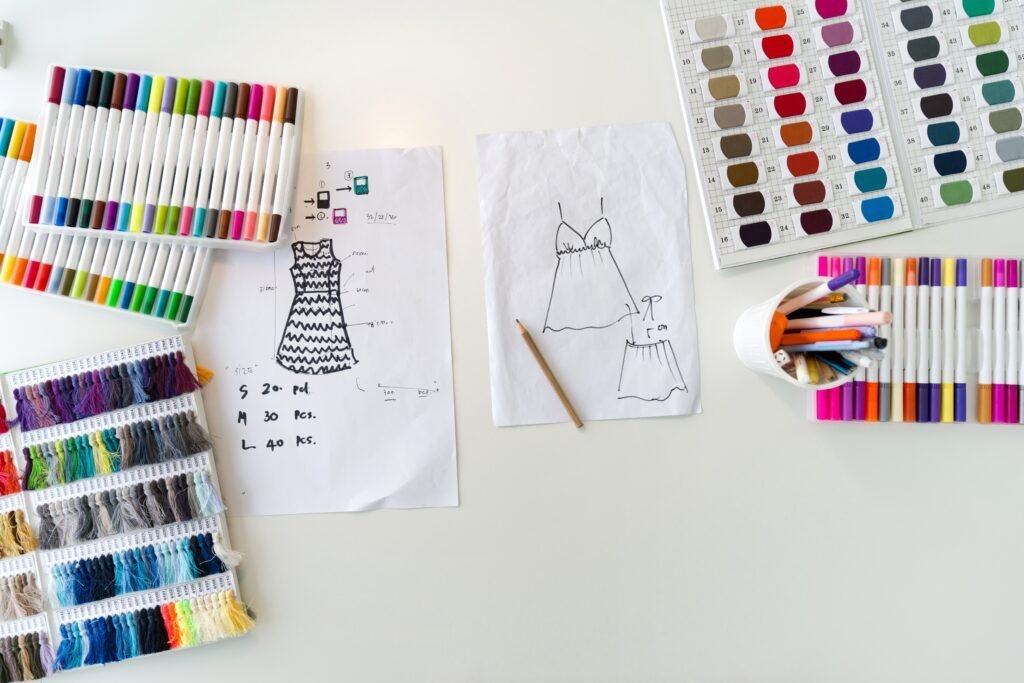
1. Understanding Your Target Audience
The first thing to know before making a clothing sample is understanding your target audience. Knowing who you’re designing for is of great significance to your work. To begin with, people of different ages have different preferences. Younger consumers tend to like fashionable and modern designs, while older consumers prefer traditional designs. Then, you have to know how much your target audience are willing to pay for their clothes before making samples. Wrong pricing will have negative influences on sales. Finally, understanding your target audience before making samples can avoid unnecessary rework. Now, the importance of knowing who you’re designing for is obvious to see.
As is mentioned above, different people have different preferences. So, audience preferences can influence design and material choices. On one hand, people’s preferences on clothes are becoming more and more unpredictable. Your designs have to conform to people’s fashion tastes. So, the audience preferences can influence the designs of your clothes. On the other hand, customers today focus more on sustainability. That will definitely affect your material choices. You cannot use materials that harm the environment.
2. Choosing the Right Fabric
Choosing the right fabric is also an important thing you should know before making a sample. Before choosing the fabric of your designs, there are several factors that we need to take into considerations, such as durability, cost, comfort, and aesthetics. The durability of the fabrics determines how long can the customers wear your designs for. The cost of the fabrics affects pricing strategy. Besides, the fabrics you choose should be comfortable to touch and need to look good on human bodies.
Above are the basic factors to consider before choosing the right fabric, but there are still two important factors missing, that is fabric drape and weight. Fabric drape is crucial to the design of a garment. It not only determines the overall impression of the garment, but also affects details like whether the garment will wrinkle or not. Fabric weight determines the weight of the garment. If a garment is too bulky, it will be uncomfortable to wear. All in all, in order to choose the right fabric, we need to consider many factors before making a decision.
3. Pattern Making Essentials
You should also have knowledge about pattern making essentials before making a clothing sample. You must be wondering what is the role of patterns in clothing samples. A pattern is more than just a template for cutting cloth. It is the document from which a production run of garments is made and used in many different ways by production pattern cutters and graders, Lay planners and factory manufacturing personnel.
When making patterns, there are several commonly made mistakes you need to avoid. The first mistake is using only one prototype for pattern making. Since different people have different body shapes, it is necessary to use different sized prototypes for pattern making. The second mistake is relying too much on your own experience in pattern making. Nowadays, garment pattern making technology is constantly improving, and the theory is constantly advancing. As designers, we cannot always rely on the past experience of pattern making. The third mistake is not paying attention to the study of theoretical knowledge. Clothing pattern making is a comprehensive work. People need to know the knowledge of design, fabric and other aspects, so we must keep learning the theoretical knowledge.
4. Seam and Stitching Considerations
Seam and Stitching Considerations are also what you need to know before making a sample. There are different types of seams. The first type is superimposed seam, it is used to create neat load bearing seams for lingerie, shirts, etc. The second type is called lapped seam. It is used in jeans manufacture because of its strong construction. The third type is flat seam. This type of seam will consist of two components and can be seen on very fine knitted garments where seams are required to be free from bulk. The last type is called bound seam. It is often used on the necklines of t-shirts.
As we know, sturdy stitching is of great importance to the durability of clothes. With the rapid development of the apparel industry, the quality of sewing threads has also improved greatly. Sewing thread helps to sew the pieces of clothing together and connect different parts of clothes in the sample production process. A strong sewing thread can improve the quality of clothes and increase the durability of the garment. Therefore, sturdy stitching is very important to the durability of clothing.
5. Sizing and Fit
Sizing and Fit is another thing you need to know before making a sample. Since different people have different body shapes, it is really important for us to create samples in different sizes. We can see how different sizes of clothes look. Besides, this will allow more consumers to select comfortable clothing with the right size. Comfort is an important factor that customers consider. Here are a few tips for ensuring a comfortable fit.
- Use materials with good elasticity to make clothing samples. It will give your garment a better ability to stretch and let it adapt to different people’s body shapes.
- Use breathable fabrics. People tend to dislike clothes that are too stuffy to wear. Clothes made of breathable fabrics can make them feel cooler when wearing them.
- Stitch more densely when sewing clothes. Dense stitches can add comfort of the garment, thus ensuring a comfortable fit.
6. Budgeting for Your Sample
The next thing you should consider is your budget for your sample. You need to estimate costs for materials, labor, and modifications. In order to accurately estimate your costs, you need to list all of the materials, labor, and other costs required to make the samples. Then, you add up all of the costs to get an accurate estimate of costs.
Almost everyone wants to cut the budgets, but as designers, you cannot reduce the quality of your sample. Here are s few ways to save without compromising quality. First, you can reduce raw material costs by contacting different material suppliers, comparing their prices, and choosing the most appropriate supplier. Secondly, you can reduce the labor cost by reducing staff and increasing efficiency. Third, in order to reduce the cost of modifications, you can make sample production after finalizing the drawing of your design.
7. Working with a Seamstress or Manufacturer
Working with a seamstress or manufacturer before making a sample can make your job a lot easier. Here are some of the benefits of professional input. On one hand, working with experienced seamstresses and manufacturers can greatly increase the efficiency of your work. On the other hand, seamstresses and manufacturers tend to have a higher level of technical skills, which guarantees the quality of the work.
Communicating your vision effectively is also very important in the collaboration. Design is a teamwork and designers need to work closely with other team members. Effective communication ensures that everyone understands and follows the design goals and requirements. Through effective communication, designers can better convey the purpose and concept of the design to seamstress or manufacturer. This ensures that the designer’s ideas are accurately realized, thus enhancing the effectiveness and quality of the design.
8. Testing and Feedback
We all know that samples need to be tested, so you need to have some basic knowledge about testing and feedback. Wear-testing your sample is an important step you cannot ignore. Wear-testing is to test the ability of garments to resist wear and tear under the action of repeated friction by mechanical forces. Garments are subject to different external factors, especially friction with the surrounding objects, resulting in different degrees of wear and tear and even damage to the garment. Wear-testing allows us to know the abrasion resistance of a garment and find ways to improve it.
After the test, you should gather feedback from potential customers. You can also use comment forms to collect feedback from potential customers who haven’t yet bought anything from your business but might be interested in doing so in the future. After you receive the feedbacks, you need to think of ways to improve the quality of your clothes accordingly.
9. Making Necessary Adjustments
Making necessary adjustments is another thing you should know before you make a sample. You need to iterate base on feedback and test results. For instance, if anything goes wrong with the results, you have to go through it carefully to figure out how to make amends. When you have a plan, you need to make adjustments accordingly in order for your samples to meet your standards.
Always remember, flexibility is very important in the design process, for it makes you adjust your samples easier. Flexibility in design means that as a designer, you have to leave space to make adjustments to the garments you design. If it is difficult to make changes to your design, it will be hard to make adjustments when the sample tests do not meet your expectations. Then, you have to come up with a new design, which will increase the cost of materials as well as the cost of time.
10. Finalizing Your Sample for Production
Here’s one last thing you should remember, that is finalizing your sample for production. Once you’re satisfied with your sample, there are several steps you need to follow. The first step is to create a detailed production plan to ensure that the garments are produced on time. The second step is to carry out random quality checks during mass production period to ensure that all garments produced meet the same standards as the samples. The third step is to follow up on the production process to ensure that the garments are produced according to the requirements.
Conclusion
Now we have come to a very important period of transitioning from sample to full-scale production. Unlike making samples, large-scale production requires us to do the work with both high quality and high efficiency. If you follow the steps mentioned above, you will successfully navigate this transition period.
To sum up, thorough preparation is both necessary and important before making a clothing sample. The reasons are obvious. On one hand, it can help you see the clothing defects in time and take actions to make adjustments. On the other hand, once you are satisfied with the samples, you can get your work done a lot easier during large-scale production. I sincerely encourage designers to invest time and effort into the sampling process for long-term success.
As a garment manufacturer with 15 years of experience, Natural Touch Clothing has produced countless high-quality garment samples for our clients and helped their brands achieve success. If you have any questions about garment production or are looking for a manufacturer who can produce high-quality garments for you, please feel free to contact us.

